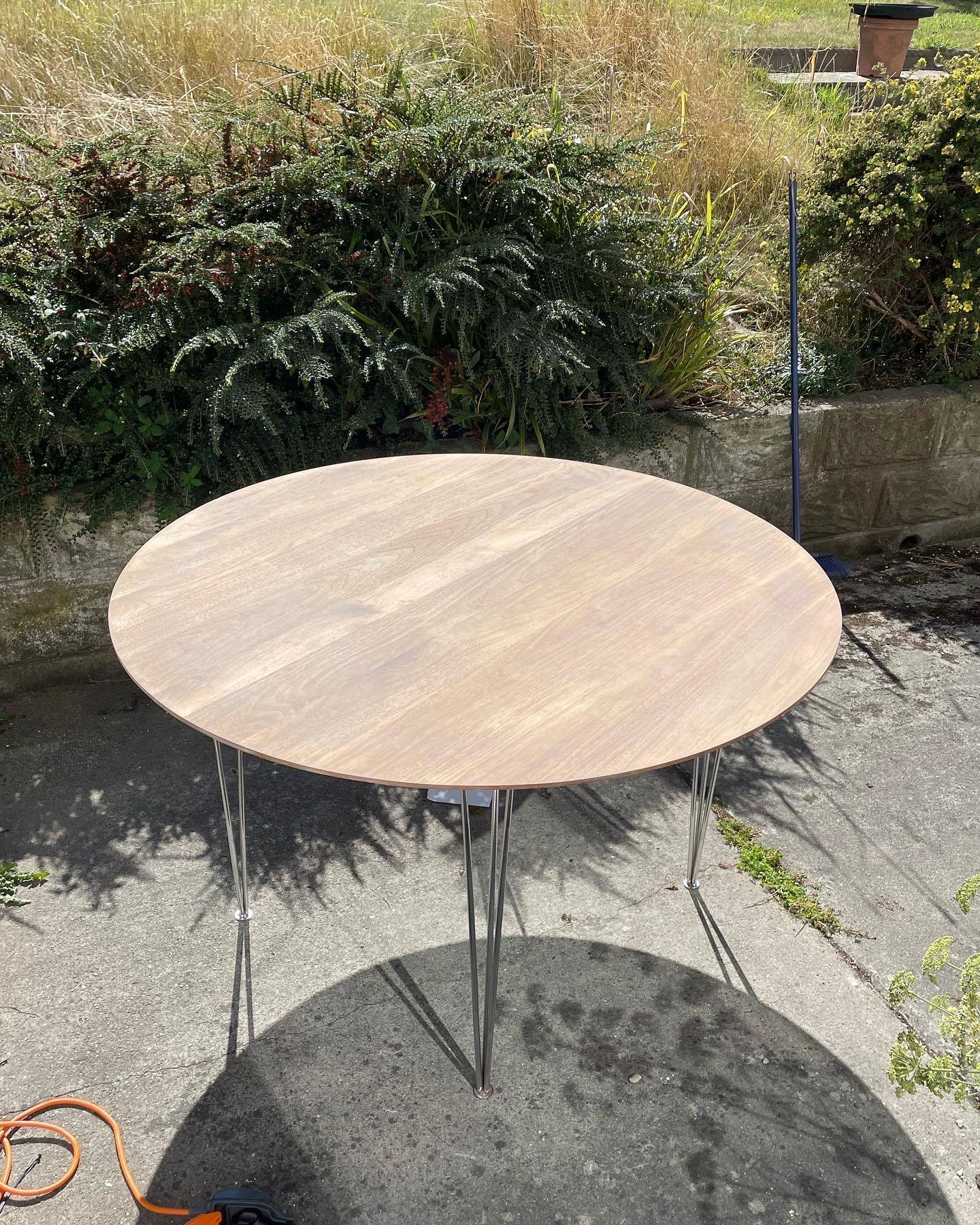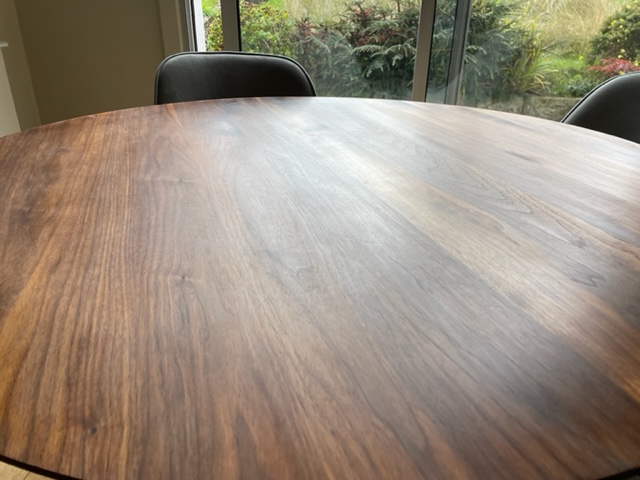I have a walnut table from Room and Board that I love, but after ten years it was quite scratched up and the finish was lifting in places. I have never done this before, but after not being able to find a refinisher, I decided I would try to resurface it myself with Rusten's Danish Oil after watching some youtube videos that recommended this finish (and this process).
First sanding: 40 -> 80 -> 120 -> 150 grit using a random orbital sander Left a thick coat of oil on for 30 minutes, recoating the areas that were drying out and then wiped off excess Let dry for a day and as expected, the grain rose and it was quite rough to the touch.
Second sanding: 220 grit with an orbital sander and then a manual sanding block (with the grain) Left oil on for 30 minutes, recoating the areas that were drying out and then wiped off excess Here's where I first noticed some uneven-ness in the look of the wood, and I was wondering if that was just what it was supposed to look like or whether some of the wobble in the orbital sander had given me an uneven depth?
Let dry for two days. It was mostly smooth to the touch after this, but there were some areas that were rough to the touch.
Third sanding: 220 grit / manual sanding block with the grain Left oil on for about 15 minutes, recoating the areas that were drying out and then wiped off excess. Let dry for about four days - noticed that I hadn't done a good enough job wiping off excess and there was some build-up of oil splotches in places. Smooth to the touch after this. Finish wasn't quite as uneven as before, but it was still quite noticeable.
Fourth sanding: 400 grit/manual sanding block with the grain Left oil on for about ten minutes, recoating the areas that were drying out and then wiped off excess. Let dry for five days. It was very smooth at this point, but the finish still looked uneven.
Fifth sanding: 400 grit/manual sanding block with the grain - wet sanded with a thin coat of danish oil Left oil on for about ten minutes after sanding, wiped off excess. Let dry for two days - buffed using a buffer and a lambswool disc.
Now, it's glassy smooth to the touch, but blotchy in places (photos) and I don't know how to fix it. Should I try adding a polyurethane top coat or a wax? Or do I need to go back to step two and do a thorough sanding starting back at a 120 grit to even out the finish?
(Or is this a perfectly acceptable amateur finish?)
Update:
Here is the table after initial sanding - I think I got all the original finish off.



